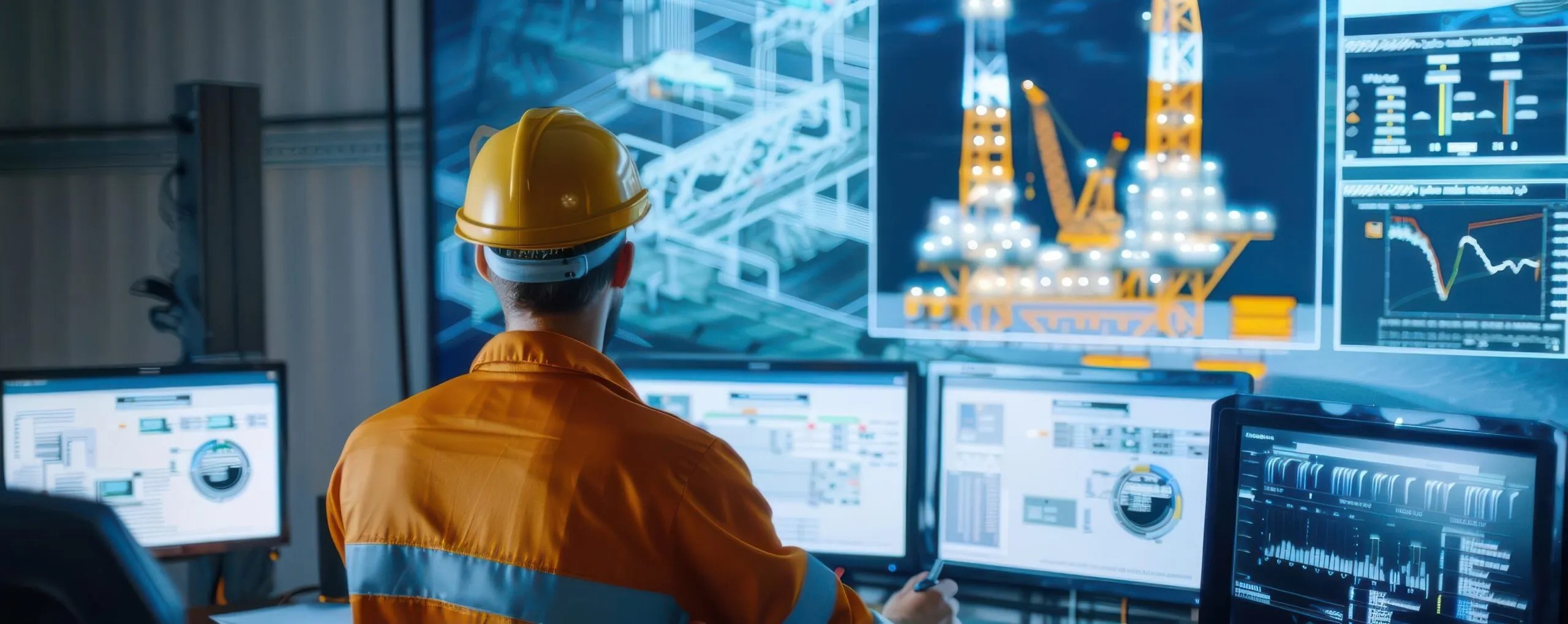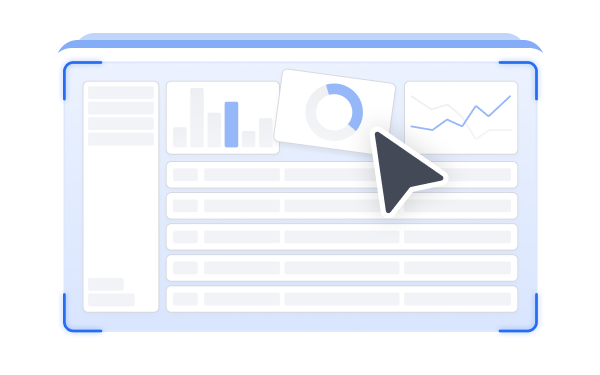The midstream oil and gas industry has long been a cornerstone of the global economy, but it is also a sector undergoing significant transformation. One of the major drivers of this change is the explosion of data. From exploration to extraction, production to transportation, and even refining, oil and gas operations generate vast amounts of data at an unprecedented scale.
However, while valuable, this data is often fragmented, complex, and difficult to interpret. In an industry where decision-making is critical, timely, and high-stakes, this data can overwhelm traditional analysis methods. Without the right tools to visualize and interpret it effectively, oil and gas companies risk missing out on critical insights, operational inefficiencies, and potential opportunities for innovation.
Effective data visualization is key to navigating this wealth of information. Visualization tools help decision-makers in oil and gas companies not only see the data but also understand it quickly, clearly, and in actionable ways. Visualizing data can uncover patterns, trends, and outliers that might go unnoticed in raw numbers.
Better visualization enables faster, more informed decisions, which drive operational efficiency, safety improvements, cost reductions, and the identification of new opportunities. With the rise of technologies, advanced visualization techniques allow the industry to take a more holistic and predictive approach to its operations, shifting from reactive to proactive management.
In the next sections, we’ll explore how data visualization tools and techniques are being used to improve performance across key aspects of the oil and gas industry.
#Challenges in Data Interpretation Without Visualization
Without effective data visualization, interpreting vast amounts of raw data in the midstream oil and gas industry can be an overwhelming and error-prone process.
Here are some key challenges that organizations face:
Overwhelming Data Volume
Without visualization, operators and decision-makers can easily feel overwhelmed by the sheer volume of information. Raw data in tabular or unorganized formats often lacks context, making it difficult to draw meaningful insights.
Difficulty in Identifying Patterns and Trends
Without visualization, the process of identifying trends in data becomes tedious and time-consuming. Analysts may struggle to detect subtle changes in production rates, equipment performance, and environmental conditions.
Increased Risk of Human Error
Interpreting complex data without visualization often involves manually sifting through spreadsheets or databases, which increases the likelihood of human error. Interpreting large sets of numbers can lead to misinterpretations or miscalculations.
Lack of Real-Time Insights
Without visual tools, decision-makers may struggle to process and act on data in real time. Raw data, when presented without clear visual context, can make it difficult to immediately spot issues that require attention.
Missed Opportunities for Optimization
Small improvements in efficiency, production rates, and safety can lead to substantial gains. Without visualization tools, identifying areas for optimization becomes a difficult and manual process.
#Benefits of Data Visualization for Midstream Operations
Data visualization tools can provide invaluable insights into these operations, enabling companies to streamline processes, reduce risks, and improve decision-making.
Here are some key benefits of data visualization for midstream operations:
Identifying Inefficiencies and Bottlenecks
One of the primary benefits of data visualization in midstream operations is the ability to identify inefficiencies and bottlenecks in the supply chain quickly. Midstream operators can pinpoint areas where delays or inefficiencies occur by visualizing key metrics such as pipeline flow rates, storage capacity utilization, pump performance, and transportation schedules.
Enhancing Safety Monitoring and Risk Assessment
Midstream operations involve transporting hazardous materials like crude oil, natural gas, and refined products. The safety of these operations is paramount, and any disruptions can lead to significant environmental, financial, and safety risks. Data visualization can play a critical role in monitoring safety conditions and identifying potential risks before they escalate.
Improving Decision-Making with Real-Time Dashboards
Real-time dashboards are powerful tools that enable operators and decision-makers to monitor midstream operations in real time, facilitating faster and more informed decisions. These dashboards pull data from multiple sources (e.g., sensors, IoT devices, operational logs) and present it in an easily digestible format, often with interactive charts, graphs, and maps.
#Key Data Visualization Tools & Technologies
Data visualization tools and technologies are essential for enabling informed decision-making, improving operational efficiency, and enhancing safety in the midstream oil and gas industry.
Here’s an overview of these key technologies and how they are utilized:
SCADA (Supervisory Control and Data Acquisition) and GIS Mapping Tools
SCADA and Geographic Information System (GIS) mapping tools are vital for real-time monitoring and visualization of complex operations, especially in pipeline management and field operations. These systems collect data from sensors, meters, and other equipment in the field and then visualize it for analysis and decision-making.
AI-Driven Predictive Analytics
AI-driven predictive analytics tools are revolutionizing the midstream oil and gas industry by providing insights that go beyond traditional descriptive analytics. These tools analyze historical data, identify patterns, and use machine learning algorithms to predict future events, such as equipment failures, production declines, or supply chain disruptions.
Business Intelligence (BI) Platforms
Business Intelligence (BI) platforms combine data integration, visualization, and analytics to provide comprehensive insights for decision-makers. In the energy industry, BI platforms are used to analyse financial, operational, and environmental data to improve performance. Also, to optimise resource allocation and manage risk.
By leveraging these technologies, midstream oil and gas companies can improve their operational efficiency, reduce costs, enhance safety, and achieve better overall performance in an increasingly data-driven environment.
#How to Implement Effective Data Visualization Strategies
Implementing effective data visualization strategies is crucial for maximizing the value of data, enhancing decision-making, and improving operational efficiency in the midstream oil and gas industry.
Here’s how to implement an effective data visualization strategy:
Choosing the Right Software
Selecting the right data visualization software is fundamental to the success of any data visualization strategy. The chosen midstream oil and gas software should meet the operation’s specific needs, integrate with existing systems, and provide the functionality required for the industry’s complex data sets.
To learn more about how to choose the right software, check our blog ‘How to Choose the Right Software for Your Midstream Operations’.
Training Teams to Interpret and Act on Visualized Data
Implementing the right tools is only part of the equation. To get the most out of your data visualization strategy, your team needs to understand how to interpret and act on the insights provided. Training is a key component of any successful implementation.
By carefully considering the unique needs of your operations and empowering teams with the right tools and knowledge, you can transform raw data into valuable insights.
#Conclusion
Better visualization leads to improved operational control by providing clear, actionable insights that drive more informed decisions and enhance efficiency. With the ability to visualize complex data in real-time, companies in the midstream oil and gas sector can not only optimize day-to-day operations but also lay the foundation for long-term success.
As the industry becomes more data-driven, effective data visualization will continue to be an essential tool for improving control, optimizing performance, and staying competitive in a fast-changing market.




